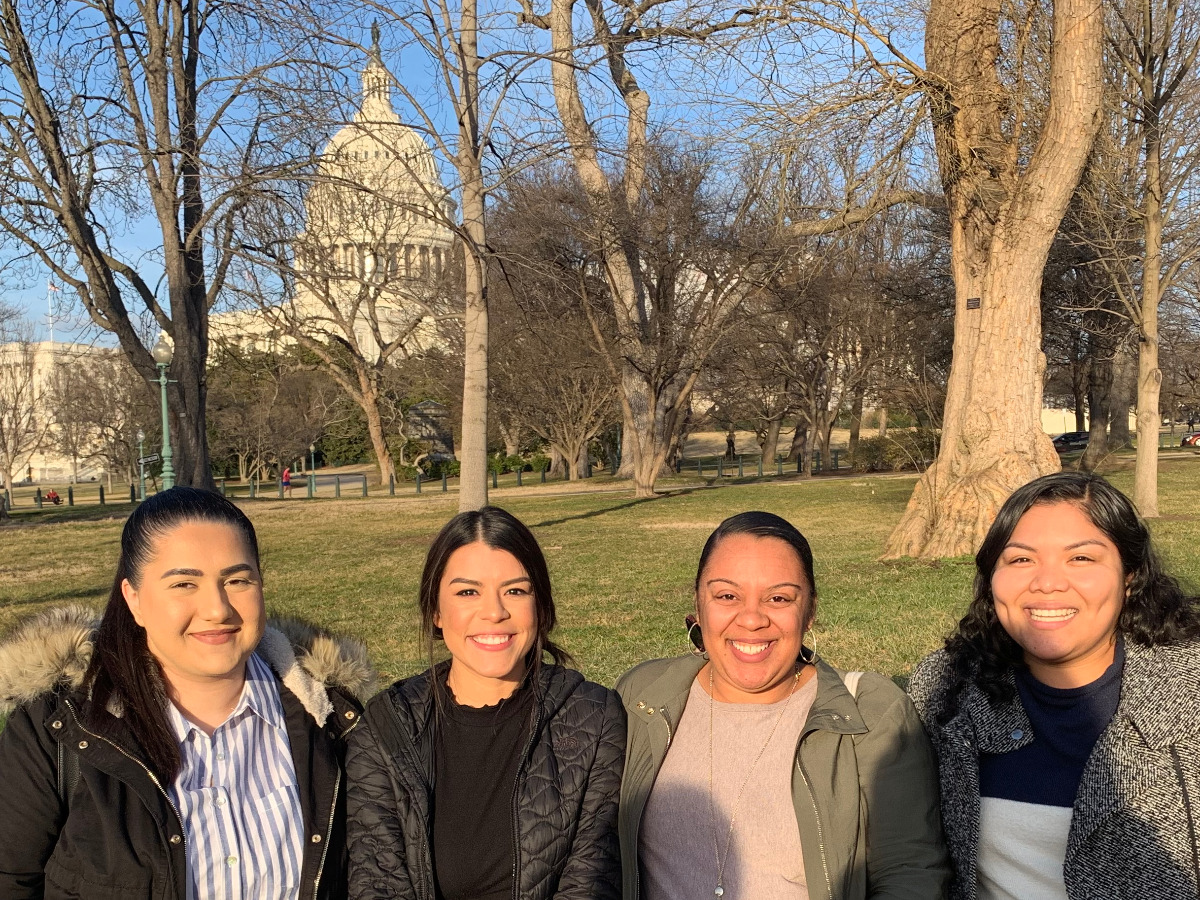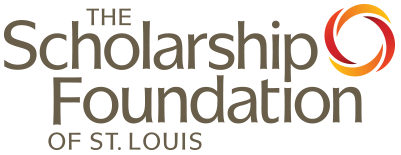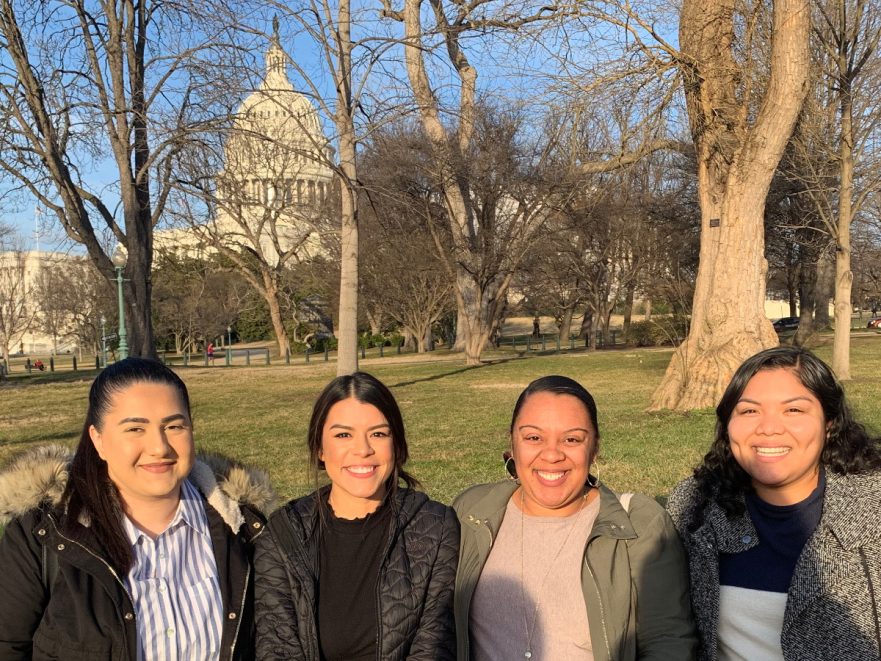
Scholarship Foundation advocacy interns and staff members at the U.S. Capitol in 2019
In late December, Congress passed a bipartisan spending bill to fund the federal government through September of 2021 and to provide relief to millions who are struggling. The relief package includes several provisions related to higher education that affect the work of The Scholarship Foundation and the educational opportunities provided to its students.
There is much public confusion amidst the provisions of the last COVID relief package passed in March (known as the CAREs Act), several tried and failed attempts at passing additional relief legislation, and the proposals for change in federal policy presented during campaign season.
The recently passed spending bill and COVID relief package included significant changes to critical programs that impact low-income students directly.
Below is a summary of the provisions.
Pell Grants: The maximum Pell Grant award will increase by $150 to $6,495 for the 2021-22 award year.
Food Security: The relief package includes $13 billion in funding for increased family nutrition benefits. Eligibility for supplemental nutrition assistance program (SNAP) benefits will be changed to accommodate students who are enrolled at least half time in an institution of higher education; are eligible to participate in a State or federally financed work-study program as determined by the institution of higher education; or, in the current academic year, have an expected family contribution of $0 as determined by the Higher Education Act.
Education Funding: Overall, the relief package includes $82 billion for education funding.
Institutions of higher education will see $22.7 billion for the Higher Education Emergency Relief Fund, which provides grants to institutions to help defray expenses related to COVID-19, provide additional financial aid to students, and provide additional services to students for authorized activities.
The package also allots $54 billion for the Elementary and Secondary School Emergency Relief Fund, which provides grants to states, including funding allocated to school districts based on existing formulas, for a variety of acceptable uses.
There will be $4 billion for the Governors Emergency Education Relief Fund, which provides flexible funding to states to use for early childhood education, elementary and secondary education, or higher education, based on the needs of the state, of which $2.5 billion is reserved for emergency assistance to non-public schools.
Free Application for Federal Student Aid (FAFSA): Some of the largest provisions in the bill and relief package are related to simplifying the FAFSA. Below are the details of the legislation related to changing the FAFSA.
The negotiated FAFSA simplification agreement includes the following and would be implemented for the FAFSA released on Oct. 1, 2022:
- Eliminates several questions, especially those that create barriers such as the prohibition on students with drug convictions from receiving aid and mandatory selective service registration.
- Changes a maximum Pell award to be calculated based on family size and adjusted gross income as compared to the federal poverty level, allowing for early awareness for maximum Pell eligibility before completing the FAFSA form.
- Creates for the first time ever a minimum Pell award designation to be calculated the same as the maximum Pell award but using a higher set of thresholds.
- Transitions from the “Expected Family Contribution” (EFC) to “Student Aid Index” (SAI) to better communicate to students the role of the FAFSA calculation on their aid eligibility.
- Provides a negative SAI of up to -$1,500 for non-tax-filers and those FAFSA filers that the new Student Aid Index formula calculates as most in need of support to convey to financial aid administrators a greater degree of need.
- Eliminates the prohibition on incarcerated students applying for federal financial aid, also known as Pell restoration or Second Chance Pell.
- Increases the Simplified Needs Test (SNT) threshold to $60,000 adjusted gross income for tax filers who do not file certain schedules
- Requires institutions to have a professional judgment process, prohibiting institutions from refusing to consider requests.
- Allows institutions to consider FAFSA filers with unemployment benefits as part of a class action and have their income earned from work reduced to $0.
The provisions passed in this legislation will change the process for applying for and receiving federal financial aid. Simplifying the FAFSA has long been a goal of college access organizations, financial aid administrators, and others. More information about the National College Attainment Network’s FAFSA simplification work and why it matters is available here. Providing greater opportunity and imposing fewer barriers to low-income students is a step in the right direction, especially in light of distressing declines in the national data on post-secondary enrollment of these students in 2020.
Applications to The Scholarship Foundation for 2021 are now open, and staff is working to reach those whose already complicated educational path is now all the more so as a result of virtual school and financial distress among families and colleges nationwide.
While this legislation is more helpful than harmful, the challenges facing low-income students will only abate with concerted and systemic change.


